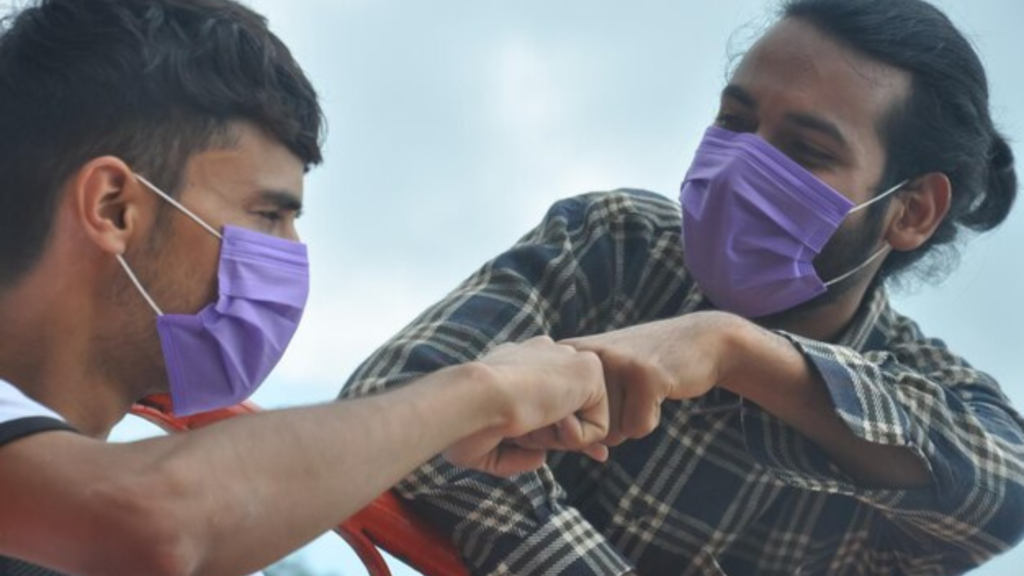
Cross-country collaborations combating tuberculosis. We finally focus on tuberculosis which is one of the deadliest disease caused by infectious agent and affects millions of people every year. However, a promising shift is occurring in the global fight against TB: Governments and agencies are joining hands, exchanging information, ideas and amalgamating their efforts to fight the epidemic. Moreover, These cross-country collaborations are eradicating some of the barriers which in the past have slowed progress and there is now a common front against TB…. By use of international cooperation, collaborative research and common medical management and interventions on social of determinants of diseases, nations are recording improved milestones in elimination of TB. Studying the experience of combating TB together with other countries shows that further cooperation becomes the key to the development of international relations and is aiming for ensuring that the disease does not affect the further destinies of people worldwide.
TB is among the top killer diseases globally, and millions of people are dying from the disease each year. Despite being a preventable and a treatable disease, TB is a slow-moving calamity in many areas, especially the low and middle-income countries. International partnerships are gradually emerging as an inevitable innovation in the fight against the worldwide TB epidemic, as partners combine their efforts, resources, and methods. Certainly, in this article they will showcase how these international partnerships aiding the change and offer new hope in the fight against Tuberculosis.
The Importance of Global Collaboration in TB Control

When countries combine their efforts, the tuberculosis problem can be fought and solving on an international basis with the focus given to the populations that are most affected. This collaborative approach much not only enhance the health care systems but also promotes the development of new paradigms of treatments, vaccines, and even diagnostics.
Cross-country Collaborations Combating Tuberculosis this means that infectious diseases like TB which know no barriers are managing by local and international efforts on a level ground that can trigger positive changes like the provision of new rapid diagnostic technologies and enhanced drug regimens that can make a world of difference in managing and ultimately eradicating TB.
Key Successful Cross-Country Collaborations in Combating TB

Here we have several examples of successful international systems that show how useful is cooperation in case of TB.
1. The main Multilateral organization that is involving by the fight against the diseases is called the Global Fund to Fight AIDS, Tuberculosis, and Malaria.
- This INFI has provided hundreds of millions of dollars to promote and fund TB initiatives around the globe. Cooperating with the governments, non-governmental organisations, and private sector, the Global Fund has distributed valuable tools to prevent and fight TB in the most threatened areas.
- Key Achievements: As it has been demonstrating by the course of this paper, the Global Fund has been instrumental in TB mortality with an effect on diagnosis and treatment in Sub-Saharan Africa and South Asia.
2. Unfortunately some of these strategies as adopted in the WHO Global Tuberculosis Programme contain the following.
- The world health organization has played a very important role in formulating and steering efforts directed at the control and elimination of tuberculosis. Within the framework of the Global Tuberculosis Programme, WHO partners with governments focus on developing and implementing national TB frameworks and promoting better diagnostics and treatment for patients.
- Key Achievements: According to WHO current Strategic Plan on TB prevention, care and control, a TB free world by 2035 is the desired goal.
3. The TB Alliance
- TB Alliance is a not-for profit organisation that operates between countries with the aim of getting new TB drugs to the market. Working with governments and pharmaceuticals they make sure that the treatment for diseases is available at small costs and more so in the developing world.
- Key Achievements: TB Alliance has pushed the development of new TB medicines including the first new class of TB drugs in over 40 years and is still working around the world to fight drug-resistant TB.
The Role of Technology and Innovation in Cross-Country Collaborations

Because, Medical technology has a very central role to enable the countries to effectively join arms in combating TB. In diagnostics, preventive, and therapeutic care, technology is aiding to close various gaps that people have been facing. Through provision of real time data and resources, digital platforms enable healthcare professionals and researchers make the right decisions at the right time.
Cross-country Collaborations Combating Tuberculosis Essentially, since technology is ever developing; this the role of technology in TB care is likely to be even more significant felt in the incoming years. Advancing solutions like blockchain are apply to protect patient’s data in different countries and enable patients’ records sharing within the framework of the MCOs and other types of international cooperation.
Conclusion

We are combating tuberculosis all over the world, and this struggle implies cooperation on the international level of states, international organizations, and various communities. Global partnerships have provided remarkable success in decreasing the incidence of TB and their future contributions will be valuable towards the eradication of the disease all together.
That’s why as the global partnership intensify its efforts against TB as a global health priority, the future will only bring more progress if humanity remains committed to equity, innovation and partnership. This global vision of a TB free world, requires robust cross border collaboration, research and development, and commitment towards leaving no one behind.
Read More: Empowering Young Girls Menstrual





